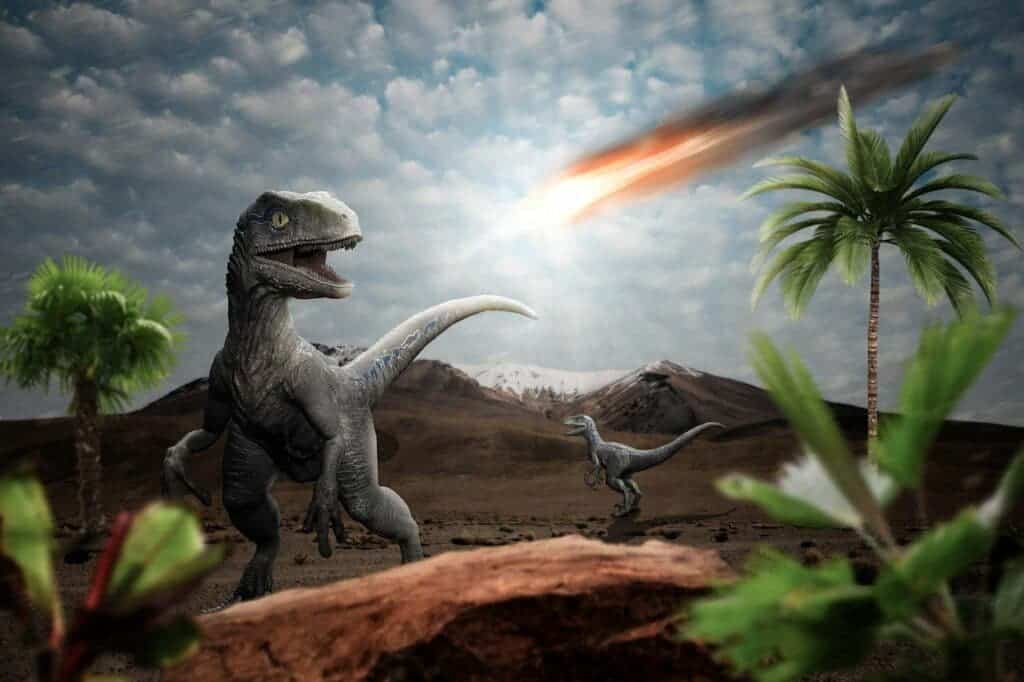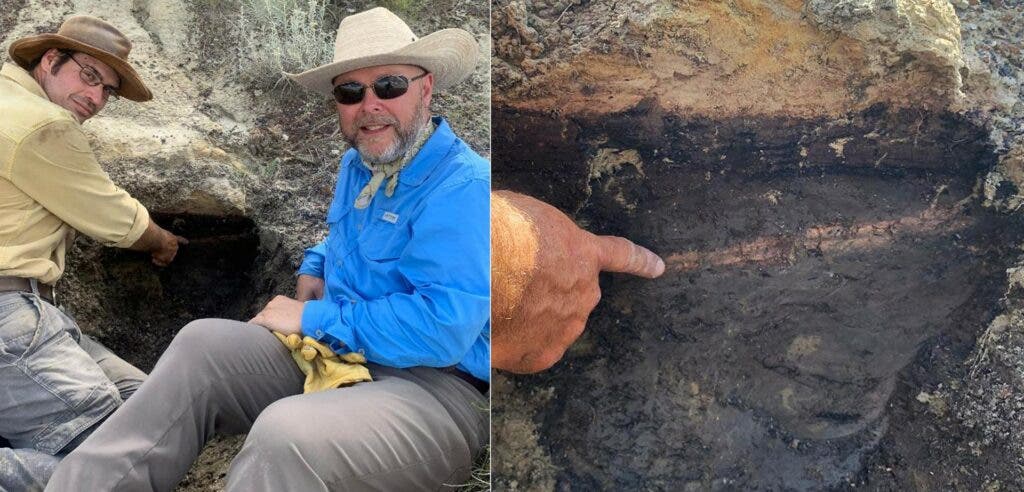
About 66 million years ago, one of the worst disasters in history happened after a large asteroid struck Earth offshore Mexico’s Yucatan Peninsula. The cosmic impact unleashed the force of 10 billion Hiroshima A-bombs and released gigatons of sulfur and carbon dioxide, which could have lowered surface air temperatures by a staggering 26 degrees Celsius (47 degrees Fahrenheit). This global winter lasted for years, enough to devastate plant life and everything else along the food chain. Around 75% of all animals and plant species went extinct, including the iconic dinosaurs (except for birds).
To say this was bad luck would be a huge understatement. If the asteroid’s course was just a tiny fraction of a degree different, it would have missed Earth. Were the impact site in a different place, things could have been different too. The time of the year may have also made a difference in which species were wiped out or spared.
This latter point was partly the subject of a new study that found the asteroid impact likely took place in the spring or early summer in the Northern Hemisphere. The findings are based on controversial fossils from Tanis, a site in North Dakota where paleontologists found a huge trove of fish fossils. The freshwater creatures are believed to have all perished just hours after the asteroid impact.
Robert DePalma, a doctoral student at the University of Manchester in the UK, was in charge of analyzing the fossils, which still preserved growth lines in their skeletons. These growth lines can trace the life history of the fish, not all that different from how growth rings record a tree’s history of drought and rainfall. Like barcodes, they enable scientists to deduce unique details like whether or not the fish had plenty of food during a particular season of their lives.
During spring and summer, the bones of fish grow a darker layer while lighter bands form in fall and winter. Previously, DePalma and colleagues published a study in 2019 that found a massive surge of water fell upon Tanis as a result of a vast earthquake triggered by an asteroid impact, rapidly depositing sediments that locked in the fish remains. The last growth lines observed in the bones of the fish were light, suggesting the asteroid impact occurred in the spring or early summer.
This line of reasoning is supported by isotopic analysis of the growth lines, since the two types of growth lines have different ratios of carbon.
“This project has been a huge undertaking but well worth it. For so many years we’ve collected and processed the data, and now we have compelling evidence that changes how we think of the KPg event, but can simultaneously help us better prepare for future ecological and environmental hazards,” DePalma said in a statement.
“Extinction can mark the end of a dynasty, but we must not forget that our own species might not have evolved if it weren’t for the impact and the timing of events that saw the end of the dinosaurs”.

In addition, the team of researchers also analyzed fossils of leaves that were damaged by insects, as well as fossilized adult mayflies found at the site, which also match the seasonal timing.
“They all matched up…everything points to the fact that the impact happened during the northern hemisphere equivalent of Spring to Summer months,” said co-author Loren Gurche.
Scientists looking to reconstruct the aftermath of the asteroid impact that caused the fifth mass extinction need every bit of evidence they can gather to paint a more accurate picture. Knowing which season of the year the asteroid struck may prove very important. Certain animals, for instance, are more vulnerable during certain times of the year, such as periods of growth and reproduction.
The data could also be applied today, helping scientists better understand how contemporary life responds to global-scale hazards.
The findings appeared in the journal Scientific Reports


